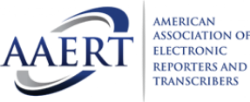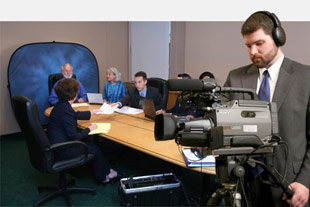Why Lawful Videography Is Essential for Accurate Court Recordings
The duty of legal videography in court room settings can not be overstated, as it offers as an important tool for protecting the honesty of court records. The effects of integrating legal videography right into common court room methods elevate important inquiries concerning its broader influence on the lawful system.
Value of Visual Proof
In the realm of lawful procedures, the value of visual evidence can not be overstated. Aesthetic evidence acts as a powerful tool in developing truths, substantiating statements, and enhancing the total clearness of a situation. This kind of evidence, which consists of photos, videos, and representations, can provide a tangible context that verbal descriptions often do not have, therefore providing juries and judges a more clear understanding of the circumstances surrounding a case.
Moreover, visual proof help in the retention of details. Human cognition is naturally aesthetic, and people are more probable to bear in mind and comprehend info provided in an aesthetic style. In the court room, this can be crucial, as engaging visual proof can sway viewpoints and reinforce the story provided by lawful reps.
Furthermore, using visual evidence can decrease misunderstandings and obscurities that commonly emerge from verbal exchanges. By giving a direct depiction of occasions, aesthetic evidence helps to get rid of subjective analyses and cultivates a more objective assessment of the truths. As a result, the assimilation of aesthetic evidence into lawful procedures not only strengthens the integrity of the judicial procedure yet also boosts the possibility of attaining a just end result.
Catching Non-Verbal Hints
Making use of advanced videography strategies can significantly improve the capture of non-verbal hints during legal proceedings. Non-verbal interaction, consisting of facial expressions, body language, and eye contact, plays a vital function in communicating feelings and intents that may not be explicitly stated in verbal statement. legal videography. Lawful videography uses high-definition electronic cameras and critical angles to ensure that these subtle hints are recorded with quality and precision
The capacity to examine non-verbal behavior can give valuable context to statements made throughout court sessions. A witness's hesitation or self-confidence can be analyzed via their position or gestures, potentially affecting the jury's assumption of trustworthiness. The use of close-up shots can help focus on an audio speaker's expressions, permitting for a more nuanced understanding of the statement.
Additionally, integrating numerous cam angles can develop a comprehensive view of communications, highlighting characteristics between parties entailed. This diverse technique not only boosts the precision of the court record however also aids in protecting the honesty of the judicial process - legal videography. Inevitably, capturing non-verbal cues through legal videography promotes a richer, much more complete depiction of courtroom proceedings

Enhancing Testimony Dependability
The integrity of testimony can be significantly strengthened with using premium lawful videography. Video recordings serve as an unbiased tool that records not only the spoken words of witnesses however likewise the nuances of their delivery, including tone, pacing, and emotional expressiveness. This diverse paperwork offers a clearer understanding of the witness's integrity and find out objectives, which can be essential in legal procedures.
In addition, legal videography lessens the capacity for misinterpretations that may develop from created records alone. When jurors can observe a witness's attitude and body movement along with their statement, they are much better outfitted to examine the credibility and reliability of the proof presented. This visual context can reinforce the this testimonial narrative, making it extra engaging and trustworthy.
Furthermore, the existence of a video clip recording can discourage possible incongruities in statement. Witnesses might be extra mindful in their declarations when they recognize they are being tape-recorded, leading to more precise and sincere accounts. Generally, high-grade lawful videography enhances the stability of testimony, making certain that the court has access to a total and sincere depiction of the realities as conveyed by the witnesses.
Supporting Appeals and Reviews
Lawful videography plays an essential duty in supporting allures and evaluations by giving an extensive aesthetic record of court room process. This visual documents records not just the talked words of witnesses and attorneys however likewise the nuances of body language, tone of voice, and court dynamics. Such elements can be crucial in understanding the context of testimonies and debates presented.
In the appellate process, where the emphasis is on errors of legislation and procedural fairness, a video document can act as a crucial device for appellate courts. It enables judges to evaluate the initial test context, making certain that choices are based on a total understanding of the proceedings. The capability to visually evaluate the attitude of witnesses or the communications between parties can expose insights that written transcripts may overlook.

Additionally, legal videography can aid in clarifying obscurities in statements or step-by-step rulings, thereby strengthening the basis for an appeal. By providing a trustworthy, unbiased account of what transpired in court, lawful videography not just sustains the integrity of the lawful process yet also equips all events included to make educated decisions concerning their cases.
Streamlining Court Room Processes
Enhancing courtroom effectiveness, lawful videography simplifies procedures Get the facts by supplying instant accessibility to visual documents of process. This technology allows judges, lawyers, and courts to revisit crucial testimony and evidence, making sure that all events have a clear understanding of the instance. By capturing the subtleties of verbal and non-verbal communication, videography enriches the record, making it simpler to comprehend the context and weight of testimonies.

Furthermore, video clip recordings can assist in remote engagement in hearings, permitting greater flexibility in organizing and involvement, which is specifically useful in complicated instances including several stakeholders.
Conclusion
To conclude, lawful videography plays an essential role in ensuring accurate court recordings by giving vital aesthetic evidence that catches both verbal and non-verbal interaction. This method enhances the dependability of statements, supports appellate reviews, and simplifies court procedures. By cultivating an extensive understanding of court characteristics, legal videography ultimately contributes to more equitable judicial results, reinforcing the integrity of the legal system and promoting notified decision-making.